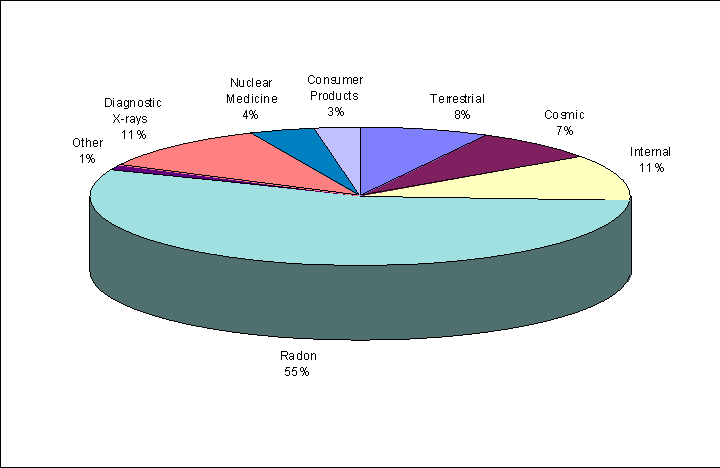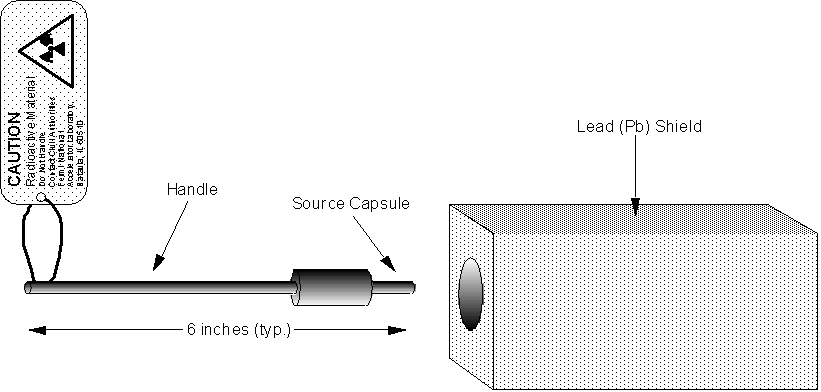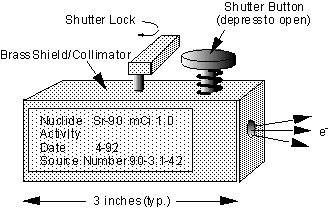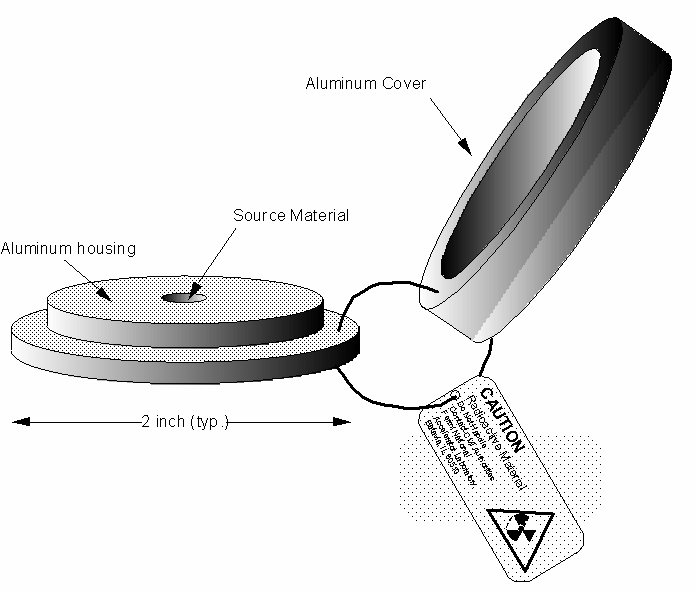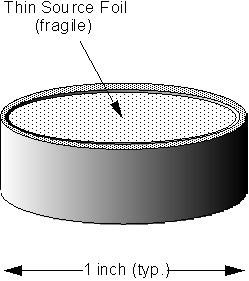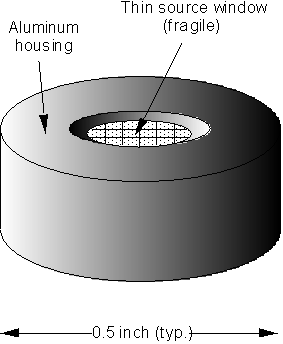- RADIOACTIVE WASTE
Defined as radioactive material that is no longer useful. This may be:
- Material that has been activated by the beam or
- Items that have come in contact with radioactively contaminated material and are now contaminated
Radioactive waste bags, radiation warning signs, and radioactive class tapes are not to be thrown away in normal trash cans or dumpsters. These items are to be reused, if possible, or collected as radioactive materials in radioactive waste drums or other suitable containers whether or not they are found to be radioactive.
- MIXED WASTE
There is also the special category of mixed waste. Mixed waste is chemically hazardous or toxic waste which is also radioactive. Mixed wastes are a special problem because it is extremely difficult and expensive to dispose of them. Fermilab currently does not have approval to dispose of any mixed waste.
It is required that individuals who generate waste certify that the waste contains no hazardous materials at the time of disposal. If the waste is radioactive and does contain hazardous materials, special instructions apply. Some typical hazardous materials used at Fermilab are ethyl alcohol, freon, methanol, acetone, lead, lead based solder, beryllium, sodium chloride, and Simple Green detergent.
Except for certain special circumstances, water and KPC 820N are the only approved cleaners which may be used on radioactive materials.
- LOW LEVEL WASTE CERTIFICATION PROGRAM
Fermilab policy is to reduce or eliminate the generation of waste material presented for disposal or released to any environmental medium. The concept of waste minimization as applied to radioactive material focuses on reducing or eliminating the volume of radioactive and mixed waste sent for disposal, thus reducing the impact on the environment and the public, and also reducing disposal costs. Reducing or eliminating the generation of waste is given prime consideration in research, process design and plant operations. The minimization of the generation of mixed waste is especially important given the great difficulty in the disposal of such wastes because of disposal site restrictions.
- Generators of radwaste must comply with program
- Divisions/Sections have waste coordinators to assist
- As a rad worker your responsibilities are:
- Ensure that any waste you generate, or are responsible for, is properly and promptly characterized and packaged for disposal.
- Ensure that unknown wastes are not generated. Characterizing unknown waste can be very time consuming and expensive.
- Ensure that mixed wastes are not generated if at all possible. Written approval may be required before using certain items.
- WASTE MINIMIZATION
Ways to reduce the amount of radioactive and mixed waste that is generated include:
- Use good housekeeping techniques.
- Segregate all activated and/or contaminated materials from all other hazardous and non-hazardous materials.
- Ensure that all materials not required to be in a radiological area are removed upon completion of the work.
- Prevent the generation of mixed waste by substituting non-hazardous materials for hazardous materials, both in the engineering design and everyday practice. Also, do not use hazardous materials to clean radioactive components unless the components have no removable radioactive contamination present.
- WASTE GENERATOR RESPONSIBILITIES
Anyone generating waste in a beam enclosure or potentially radioactive waste outside a beam enclosure is responsible for completely and accurately characterizing those waste materials prior to presenting them for disposal. This responsibility cannot be delegated or deferred. Radioactive waste materials may not be left unattended for disposal at a later time.
Radioactive items being transported to designated collection areas should either be labeled with class tape or be in radioactive waste bags. Radioactive materials shall not be stored or transported in bags used for normal trash. Radioactive materials should be transported in Laboratory vehicles.
All dry, solid materials that are collected as radioactive waste must be surveyed to ensure that they are radioactive prior to placement in a waste disposal container.
Water collected on tunnel or enclosure floors cannot be disposed of without prior permission from the Area RSO.
During normal working hours, radioactive waste items shall promptly be taken to collection areas designated by the department head or his/her designee for characterization and disposal. Persons who are issued containers are generally available to open them for waste disposal during normal working hours.
During off hours, persons who have access to radioactive waste containers are usually not available to open them. Many of the accesses for emergency repairs are performed after normal working hours and on weekends. Department heads, task managers, group leaders, or supervisors are required to designate in advance the location (e.g., locked storage cabinet) where materials can be stored until proper radioactive waste disposal containers can be opened. As a generator of radioactive waste, it is your responsibility to be aware of the location of these storage cabinets. A storage cabinet that has a common department padlock can be used for this purpose. When the material is placed in the cabinet, it is recommended that the radioactive waste generator sign the "Radioactive Waste Certification and Pickup Request Form."
The Operations Group Duty Assistant, Crew Chief, or person designated by the Crew Chief is responsible to ensure that persons who are allowed to access the beam enclosures have been trained prior to issuing enclosure keys.
- WASTE CHARACTERIZATION
All radioactive waste generators are required to characterize their waste with sufficient accuracy to permit proper identification, minimization, segregation, transportation, treatment, storage and disposal. Waste should be characterized at or near the point of generation not only for convenience, but to also prevent cross-contamination. As a minimum the generator characterization of waste shall include:
- Physical description of the waste
- Chemical characteristics of the waste and any void-filling material or absorbent.
- Volume of the waste
- Weight of waste
- Radionuclide distribution, concentration, and activity in waste matrix
- Method of assay or analysis used to determine radionuclide distribution and concentration
- Packaging details
- Packaging date, packaging weight and total volume
This information is to be placed on an inventory sheet which is maintained for each waste container as it is being filled.
The following are waste violations/problems that have routinely occurred at Fermilab. It is very important that each waste generator follow the approved program in order to minimize waste and reduce the associated cost and man-power required to properly dispose of the waste.
- Pens - especially Magnum markers.
- Water and/or oil in sump pumps. There is a check valve in the pump that contains about 1/2 cup of water.
- Lead seals.
- Printed circuit boards - they are in many places you don't expect.
- Lead solder - almost EVERY type of electrical equipment contains lead solder.
- Telephone handsets - contain a LOT of lead solder.
- Batteries - left in flashlights.
The typical radiations emitted from dry, solid radioactive material may be detected with the frisker. Typical background count rates found on the frisker are about 30-to-50 counts per minute (cpm). Items are considered to be radioactive if they have counts rates of 50 cpm above background.
NOTE: If the background count rate is greater than 50 cpm, it may not be possible to determine that an item is radioactive. Suspect materials should be taken to an area where the background count rate is at or below 50 cpm. Tritium (radioactive hydrogen) cannot be measured with available hand-held instruments.
- RADIOACTIVE WASTE CONTAINERS
All radioactive waste containers are to be kept locked up at all times so that waste characterization and control is maintained.
No free liquids or absorbed liquids of any type are to be placed in 55-gallon radioactive drums designated for dry, solid waste. These drums are to be used for dry, solid radioactive waste only.
Compactible waste, such as shoe covers, gloves, other types of protective clothing, and dry rags or wipes, that has been found to be radioactive should be placed in drums designated for compactible radioactive waste.
Oil or other liquids removed from vacuum pumps and from various devices, such as septa and separators, that have been exposed in beam enclosures must be collected as radioactive waste. The liquids may contain tritium which is not detectable with hand-held instruments and may require special evaluation to determine if they are radioactive. The liquids are to be collected in properly labeled and approved containers.
The type of container used for collection of liquid radioactive wastes can be any of the following:
- 30-gallon radioactive waste drum
- 5-gallon carboy
- 250-ml to 2-liter polyethylene bottles
The type of container used should be appropriate for the quantity of waste generated.
Radioactive liquid wastes of different types should normally be segregated. No water may be added to oil waste drums except for incidental water which may be present in vacuum pumps due to operation of the pump.
Sweeping compound used to clean beam enclosure floors may contain radioactive dust; metal grinding chips or filings; tie wraps; miscellaneous nuts, bolts, screws; and many other small parts. Sweeping compound must be collected in 55-gallon drums lined with large radioactive waste bags. Sweeping compound may not be dumped loose into unlined 55-gallon radioactive waste drums.
Non-compactible waste, such as contaminated lumber, structural steel, and beam pipe, is to be collected in 55-gallon drums separately from compactible waste.
Large quantities of materials such as radioactive cables may be collected in large steel boxes with lockable covers. Arrangements to obtain large steel boxes should be made in advance with the Division/Section ES&H Department.
The containers Fermilab uses for radioactive waste are:
- 55 gallon drums; yellow, used for dry solids; NO LIQUIDS ALLOWED
- 55 gallon galvanized drums; unpainted, used for mixed waste
- 30 gallon drums; yellow, used for either water or oil, but there cannot be any mixing of the two
- Steel boxes; scrap metal, wire cable and other items too large for a 55 gallon drum
- Radioactive Waste bags; DRY compactibles
- Bulk items too large to fit in steel boxes may be placed on skids and banded or banded and placed on cribbing
- WASTE PICK-UPS
Once waste is properly characterized and in the appropriate container, pick-up can be arranged if:
- A completed inventory form (RP Form 31 or RP Form 71) has been submitted through the division/section waste coordinator.
- All containers are properly secured to ensure no loss of contents during transport.
- The container has been surveyed and labeled as "RADIOACTIVE WASTE."
- There is no radioactive contamination on the external surfaces of the container which is above the limit for release to uncontrolled areas.
![]()
![]()
![]()
